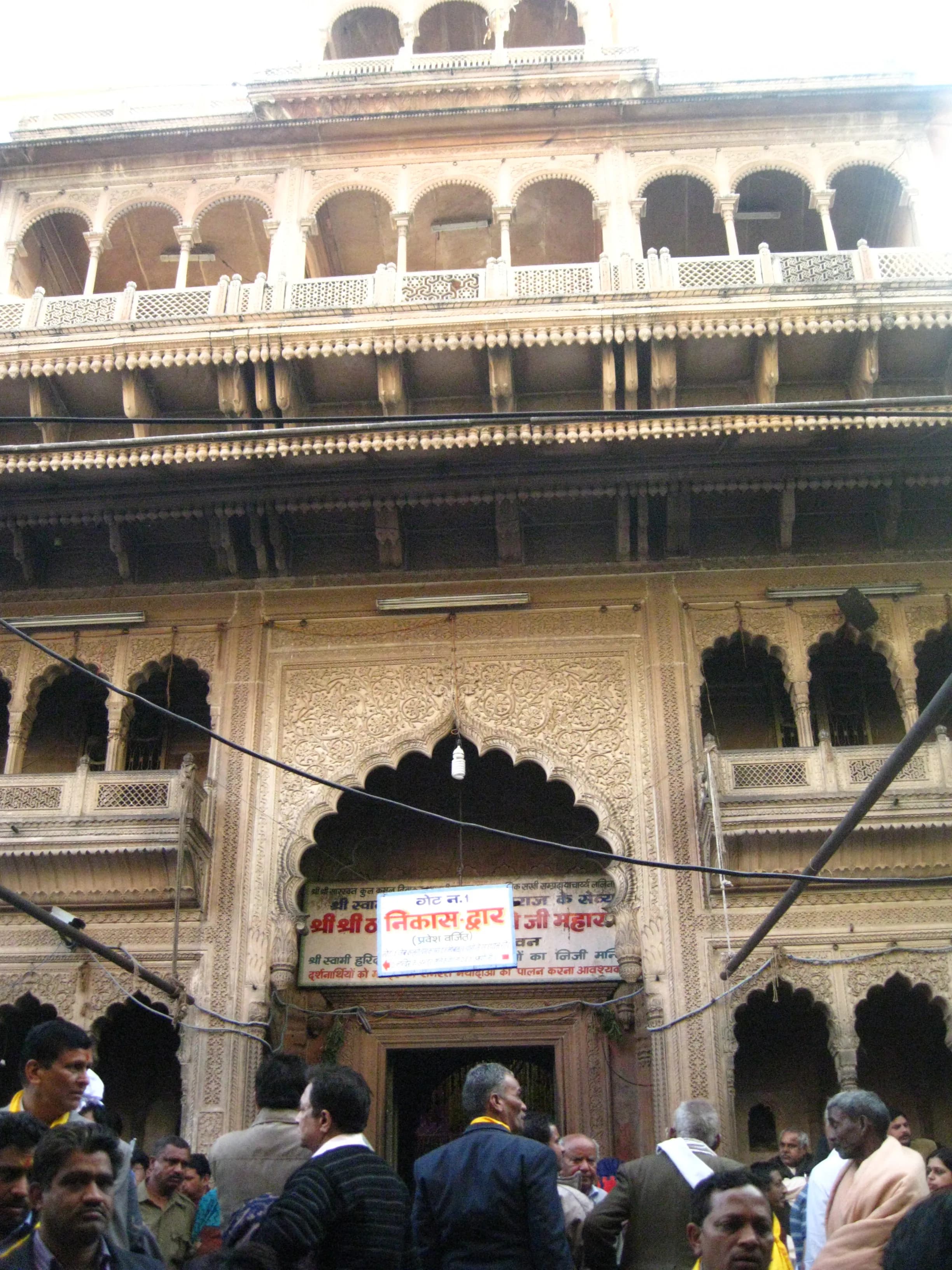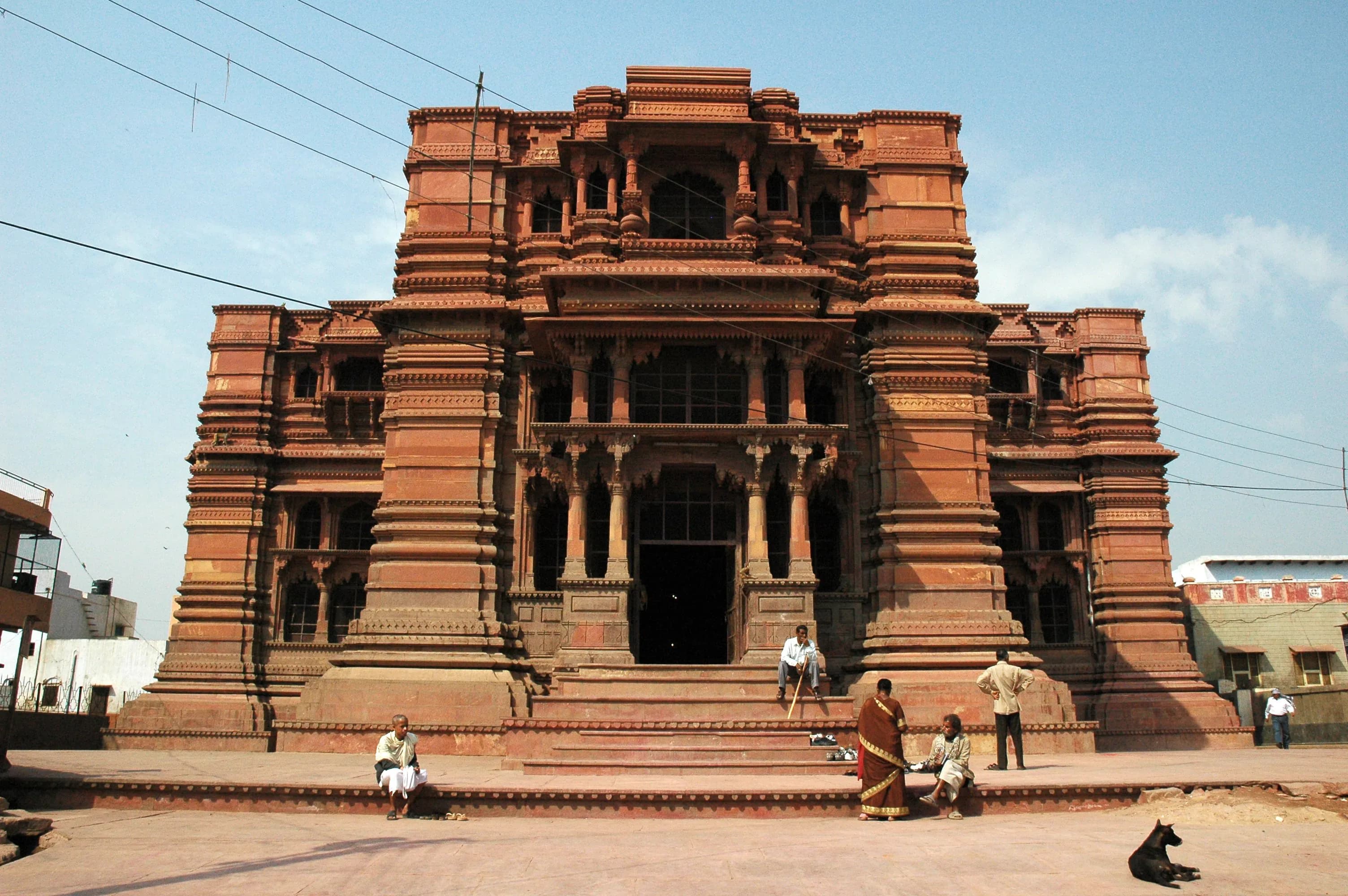Fort Near Vrindavan
The Vrindavan region hosts 2+ architecturally and spiritually significant fort, representing Uttar Pradesh's profound heritage of sacred architecture and religious devotion. These monuments span multiple historical periods and stylistic traditions, maintaining varying degrees of original integrity while continuing to serve religious and cultural functions. Our documentation provides accurate travel distances from Vrindavan, architectural descriptions, visitor protocols, and cultural context. Whether approaching these sites as sacred spaces for worship, architectural studies, or cultural exploration, proper understanding enhances meaningful engagement. This guide supports respectful visiting practices while providing comprehensive information enabling informed site selection based on accessibility, architectural significance, and personal interest. Each documented for offers unique insights into Hindu temple architecture, regional artistic traditions, and continuing spiritual practices that connect contemporary Uttar Pradesh to its ancient heritage.
Fort in Vrindavan
Team Inheritage
Heritage Contributor

Banke Bihari Temple Vrindavan
The air in Vrindavan hummed with a palpable devotion, a tangible energy that seemed to emanate from the very stones of the Banke Bihari Temple. Having explored the basalt-carved caves and intricately sculpted temples of Maharashtra, I arrived at this North Indian shrine with a keen eye for architectural nuances and a heart open to a different flavour of spirituality. The jostling crowds, the insistent chants, and the overwhelming fragrance of incense were a stark contrast to the quiet serenity I was accustomed to. The temple, nestled in the heart of Vrindavan, stands as a testament to the fervent devotion to Krishna, specifically his "Banke Bihari" form – the playfully mischievous deity who steals butter and hearts with equal ease. Unlike the grand, sprawling temple complexes I’ve seen in the South, Banke Bihari Temple is relatively compact, almost intimate. Its architecture reflects the Rajasthani style, a departure from the typical North Indian Nagara style I expected. The intricately carved sandstone facade, a warm ochre hue, is adorned with delicate latticework screens known as *jalis*. These screens not only serve as decorative elements but also allow glimpses of the deity within, creating an air of mystery and anticipation. Entering the temple felt like stepping into another world. The narrow passage leading to the inner sanctum was packed with devotees, their faces alight with devotion. The rhythmic clang of cymbals, the fervent chanting of "Radhe Radhe," and the occasional outburst of ecstatic singing created an atmosphere both chaotic and captivating. The jostling wasn't aggressive; it felt more like a collective surge of spiritual energy, everyone pushing forward towards the same divine source. Finally, I caught a glimpse of Banke Bihari. The deity, adorned in opulent silks and jewels, stood under a canopy of flowers, his flute held delicately in his hand. The image, though fleeting, was mesmerizing. The curtains that veil the deity are drawn frequently, a unique practice in this temple. Locals believe that gazing at Banke Bihari for too long can induce a trance-like state, and the curtains are drawn to break the spell. This practice, though unusual, added to the mystique and heightened the sense of anticipation. The temple's inner courtyard, though crowded, offered a brief respite from the intensity of the sanctum. Here, I observed the architectural details more closely. The pillars supporting the roof were intricately carved with floral motifs and scenes from Krishna's life, a testament to the skill of the artisans. The floor, worn smooth by centuries of footsteps, felt imbued with a sense of history and devotion. One striking difference I noted compared to Maharashtrian temples was the absence of elaborate *gopurams* or towering gateways. The focus here seemed to be entirely on the inner sanctum and the deity within. The architecture, while beautiful, served as a backdrop to the intense spiritual experience, rather than being the primary focus. Leaving the temple, I felt a sense of both exhilaration and exhaustion. The experience was overwhelming, a sensory overload of sights, sounds, and emotions. While the architectural style differed vastly from the caves and temples of my home state, the underlying current of devotion felt familiar. The Banke Bihari Temple, with its unique rituals and palpable energy, offered a glimpse into a different facet of Indian spirituality, a testament to the diverse and vibrant tapestry of faith that weaves through this land. It was a journey not just to a different state, but to a different dimension of devotion.
Team Inheritage
Heritage Contributor

Govind Dev Temple Vrindavan
The red sandstone glowed, almost humming with a palpable energy under the late afternoon sun. Govind Dev Temple in Vrindavan, though no longer in its complete glory, still exudes a majestic aura that transported me back to a Vrindavan of centuries past. Having documented Gujarat's intricate temples for years, I was eager to experience the architectural nuances of this Braj marvel, and I wasn't disappointed. The first thing that struck me was the unique blend of architectural styles. While the temple’s core exhibits a distinctly Rajput influence, reminiscent of some of the grand structures I’ve seen in Rajasthan, the seven-storied structure (now sadly reduced to three) bore a striking resemblance to European architecture, particularly reminiscent of a cathedral. This fusion, I learned, was a result of the Mughal emperor Akbar's relatively tolerant religious policies during the late 16th century, a period that allowed for such cross-cultural architectural experimentation. Stepping inside the pillared hall, which now serves as the main prayer area, I was immediately drawn upwards. The soaring ceilings, even in their truncated state, evoked a sense of grandeur. The intricate carvings on the remaining pillars, depicting scenes from Krishna's life, were a testament to the skill of the artisans. Each carving told a story, each curve and line imbued with devotion. I spent a considerable amount of time tracing these narratives with my fingers, imagining the temple in its original seven-storied splendor. The absence of the upper four stories, destroyed by Aurangzeb in the 17th century, is a poignant reminder of the tumultuous history this temple has witnessed. Yet, the resilience of the structure and the continued devotion of the pilgrims who throng its courtyard speak volumes about its enduring spiritual significance. The air vibrated with chants and the fragrance of incense, creating an atmosphere thick with reverence. The temple complex is built around a rectangular courtyard, and while the main shrine is dedicated to Govind Dev (Krishna), smaller shrines dedicated to Radha and other deities dot the periphery. I observed the local devotees engaging in various rituals, their faces reflecting a deep connection to the divine. The rhythmic clang of bells and the melodic chanting of hymns further intensified the spiritual ambiance. The use of red sandstone, a material I'm intimately familiar with from Gujarat's architectural heritage, lends the temple a warm, earthy hue. However, unlike the intricate, almost lace-like carvings often seen in Gujarati temples, the carvings here are bolder, more pronounced, reflecting a different aesthetic sensibility. The interplay of light and shadow on the sandstone surfaces created a dynamic visual experience, constantly shifting throughout the day. One particular detail that captivated me was the remnants of the original staircase that once led to the upper floors. Though now inaccessible, the sheer scale and craftsmanship of the remaining steps hinted at the lost magnificence of the complete structure. I could almost visualize the devotees ascending those stairs, their hearts filled with anticipation, to reach the inner sanctum. Leaving the temple complex, I carried with me a profound sense of awe and a touch of melancholy. Awe at the architectural brilliance and spiritual energy that permeated the space, and melancholy for the lost grandeur of a structure that once touched the sky. Govind Dev Temple stands as a testament to the enduring power of faith and a poignant reminder of the fragility of our heritage. It is a site that deserves to be experienced, not just seen, and its story, etched in stone and whispered in chants, continues to resonate through the ages.
Vrindavan
Uttar Pradesh
India
2
Fort
Discover 2 documented heritage sites within Vrindavan, Uttar Pradesh. From ancient temples to historic forts, explore cultural treasures near you with complete visitor information, GPS coordinates, timings, and directions.
- 1
Browse Sites on Map
View all 2 heritage sites with up-to-date GPS coordinates and filters for style, era, and accessibility.
- 2
Check Visitor Essentials
Confirm entry requirements, timings, photography rules, and accessibility notes before you travel.
- 3
Plan Efficient Routes
Group nearby monuments into half-day or full-day trails using local transport or hired vehicles.
- 4
Document & Share
Capture respectful visuals, collect local stories, and contribute updates to strengthen the archive.
| Location | Vrindavan, Uttar Pradesh |
| Sites Available | 2 documented |
| Transport | Metro · Bus · Auto · Taxi · Private |
| Best Season | October – March |
| Visit Duration | 2–3 hrs per site |
| Navigation Tips | Download offline maps, respect local signage |
Quick Facts
Common Questions
About Vrindavan Heritage Region
Vrindavan occupies a heritage-rich region of Uttar Pradesh, reflecting historical importance rooted in geographical advantages, pilgrimage networks, and royal patronage traditions. The concentration of fort throughout this region developed through centuries of religious devotion, political power, and cultural achievement. Sites range from locations within Vrindavan proper to monuments situated 30-90 minutes distant, enabling both brief visits and comprehensive day-long explorations. Accessible sites facilitate morning visits returning by afternoon, while more distant monuments reward full-day excursions potentially combining multiple sites along geographical routes. Transportation infrastructure throughout Vrindavan includes app-based ride services, traditional auto-rickshaws, and taxi services. Multiple-site visits often benefit from private vehicle hire enabling flexible scheduling and optimal route planning. Visiting patterns vary seasonally and weekly; weekday mornings typically offer peaceful experiences, while festival periods provide opportunities to witness continuing traditions, though with increased visitor density. This collection documents prominent sites alongside lesser-known monuments, enabling balanced itineraries combining well-documented heritage with discoveries off typical tourist circuits.
Getting Around from Vrindavan
Transportation from Vrindavan to regional heritage sites employs various modalities depending on distance and infrastructure. India offers well-developed transportation including auto-rickshaw, Indian Railways, state buses. Sites within Vrindavan limits remain accessible via local transport options. Outlying monuments may require private vehicle access: rental cars for independent travelers, or hired vehicles with experienced drivers. Organized tours offer structured itineraries with less scheduling flexibility. Distance ranges span 5-80 kilometers from Vrindavan; proximate sites (5-15km) involve 30-45 minute journeys, while more distant monuments (40-80km) require 1.5-2.5 hours depending on traffic conditions and road quality. Site-specific documentation provides exact coordinates, suggested routes, and access considerations. Local knowledge complements digital navigation; consulting residents regarding road conditions and optimal routes proves valuable.
When to Visit
Seasonal considerations significantly affect heritage site visiting experiences throughout Uttar Pradesh. The optimal visiting period for India extends October through March, offering comfortable weather conditions and extended visiting hours, though popular sites may experience higher visitor density. Most fort remain accessible year-round, though specific closures or modified hours warrant verification before visiting. Weather patterns vary by region within India, so consulting local forecasts ensures appropriate planning. Festival periods at active worship sites provide enriching cultural experiences, though with substantially increased attendance meriting advance planning. Entry fees at protected monuments typically range from ₹25-₹40. Photography for personal use is generally permitted, though professional equipment may require advance permissions.